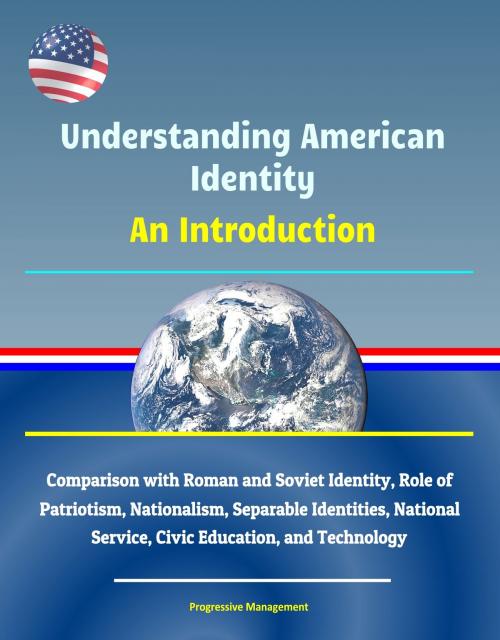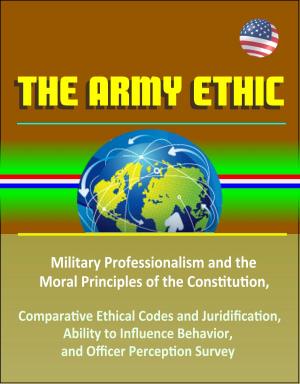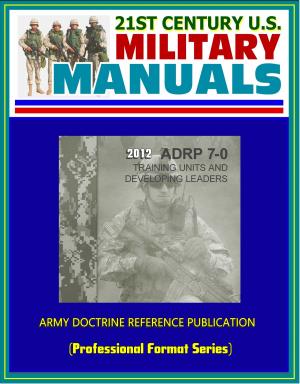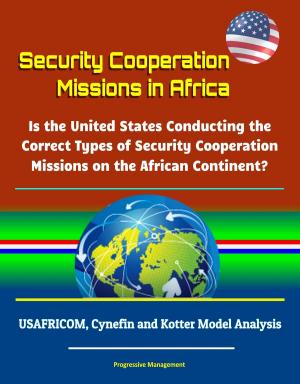Understanding American Identity: An Introduction - Comparison with Roman and Soviet Identity, Role of Patriotism, Nationalism, Separable Identities, National Service, Civic Education, and Technology
Nonfiction, Social & Cultural Studies, Political Science, Government, Public Affairs & Administration| Author: | Progressive Management | ISBN: | 9780463618547 |
| Publisher: | Progressive Management | Publication: | July 8, 2018 |
| Imprint: | Smashwords Edition | Language: | English |
| Author: | Progressive Management |
| ISBN: | 9780463618547 |
| Publisher: | Progressive Management |
| Publication: | July 8, 2018 |
| Imprint: | Smashwords Edition |
| Language: | English |
This important December 2017 report has been professionally converted for accurate flowing-text e-book format reproduction.
Why are Americans' identity narratives important for national security? This thesis utilizes a qualitative approach to analyze American identity narratives in U.S. history and contemporary society. The historic disagreement over the distribution of the fundamental American value of liberty makes the possibility of a cohesive national identity challenging. Given the effects of globalization, advances in technology, and changes in traditional demographic and sociocultural trends, any form of a national-level, narrative-based identity is not a feasible means to unify Americans. Leaders must make domestic policy decisions that increase inclusiveness in American society and avoid valuing one identity over another. Policymakers must depart from divisive identity policies in favor of those that unify Americans. Any attempt to shape the existing conflict in terms of identity is contrary to a cohesive society and, more importantly, threatens national security. This research led to two policy recommendations. First, the United States must encourage separable identities and emphasize citizens as individuals rather than groups. Second, policymakers must promote "cross-cutting ties," since much of the division in the United States stems from the isolation from one another that many citizens experience. Revamped civic education and national service programs can serve to form those cross-cutting ties.
I. INTRODUCTION * A. INTRODUCTION * B. WHY IDENTITY MATTERS * C. HOW AMERICANS DEFINE IDENTITY * D. RESEARCH APPROACH * E. THESIS ROADMAP * II. THE EVOLUTION OF AMERICAN IDENTITY * A. AMERICAN IDENTITY IN HISTORY: A COMPLEX TALE * B. THE IDENTITY DEBATE: A CRACK IN THE LIBERTY BELL * C. KEY MOMENTS IN THE EVOLUTION OF AMERICAN IDENTITY * 1. The Revolution * 2. The Civil War * 3. Women's Suffrage * 4. The Civil Rights Movement * D. CONCLUSION * III. AMERICA'S IDENTITY DYSPHORIA * A. GLOBALIZATION'S INFLUENCE * B. THE IMPACT OF TECHNOLOGICAL ADVANCES * C. AMERICA'S PLACE IN THE WORLD * D. OTHER INFLUENCERS OF NATIONAL IDENTITY * 1. Nationalism * 2. Public Opinion * 3. Ethnicity * 4. Religion * 5. Class * 6. Political Division * 7. Culture Wars * 8. Identity Politics * E. CONCLUSION * IV. IDENTITY IN ROME AND THE U.S.S.R. * A. ROMAN IDENTITY * B. SOVIET IDENTITY * C. SUMMARY * V. THE WAY AHEAD * A. A COMMON PURPOSE: E PLURIBUS UNUM * B. THREE OBSTACLES TO UNITY * 1. Obstacle # 1: Assimilation and Acculturation * 2. Obstacle # 2: Subnational Identities * 3. Obstacle # 3: Subgroup Suppression * C. ONE SOLUTION: ONE NATIONAL IDENTITY—MANY INDIVIDUAL IDENTITIES * D. HOW TO GET THERE: PATRIOTIC BUILDING BLOCKS * 1. Civic Education * 2. National Service * VI. CONCLUDING THOUGHTS * A. TAKEAWAYS * B. AREAS FOR FUTURE RESEARCH * LIST OF REFERENCES * INITIAL DISTRIBUTION LIST
This important December 2017 report has been professionally converted for accurate flowing-text e-book format reproduction.
Why are Americans' identity narratives important for national security? This thesis utilizes a qualitative approach to analyze American identity narratives in U.S. history and contemporary society. The historic disagreement over the distribution of the fundamental American value of liberty makes the possibility of a cohesive national identity challenging. Given the effects of globalization, advances in technology, and changes in traditional demographic and sociocultural trends, any form of a national-level, narrative-based identity is not a feasible means to unify Americans. Leaders must make domestic policy decisions that increase inclusiveness in American society and avoid valuing one identity over another. Policymakers must depart from divisive identity policies in favor of those that unify Americans. Any attempt to shape the existing conflict in terms of identity is contrary to a cohesive society and, more importantly, threatens national security. This research led to two policy recommendations. First, the United States must encourage separable identities and emphasize citizens as individuals rather than groups. Second, policymakers must promote "cross-cutting ties," since much of the division in the United States stems from the isolation from one another that many citizens experience. Revamped civic education and national service programs can serve to form those cross-cutting ties.
I. INTRODUCTION * A. INTRODUCTION * B. WHY IDENTITY MATTERS * C. HOW AMERICANS DEFINE IDENTITY * D. RESEARCH APPROACH * E. THESIS ROADMAP * II. THE EVOLUTION OF AMERICAN IDENTITY * A. AMERICAN IDENTITY IN HISTORY: A COMPLEX TALE * B. THE IDENTITY DEBATE: A CRACK IN THE LIBERTY BELL * C. KEY MOMENTS IN THE EVOLUTION OF AMERICAN IDENTITY * 1. The Revolution * 2. The Civil War * 3. Women's Suffrage * 4. The Civil Rights Movement * D. CONCLUSION * III. AMERICA'S IDENTITY DYSPHORIA * A. GLOBALIZATION'S INFLUENCE * B. THE IMPACT OF TECHNOLOGICAL ADVANCES * C. AMERICA'S PLACE IN THE WORLD * D. OTHER INFLUENCERS OF NATIONAL IDENTITY * 1. Nationalism * 2. Public Opinion * 3. Ethnicity * 4. Religion * 5. Class * 6. Political Division * 7. Culture Wars * 8. Identity Politics * E. CONCLUSION * IV. IDENTITY IN ROME AND THE U.S.S.R. * A. ROMAN IDENTITY * B. SOVIET IDENTITY * C. SUMMARY * V. THE WAY AHEAD * A. A COMMON PURPOSE: E PLURIBUS UNUM * B. THREE OBSTACLES TO UNITY * 1. Obstacle # 1: Assimilation and Acculturation * 2. Obstacle # 2: Subnational Identities * 3. Obstacle # 3: Subgroup Suppression * C. ONE SOLUTION: ONE NATIONAL IDENTITY—MANY INDIVIDUAL IDENTITIES * D. HOW TO GET THERE: PATRIOTIC BUILDING BLOCKS * 1. Civic Education * 2. National Service * VI. CONCLUDING THOUGHTS * A. TAKEAWAYS * B. AREAS FOR FUTURE RESEARCH * LIST OF REFERENCES * INITIAL DISTRIBUTION LIST















